#babasaheb ambedkar
Text
14 avril : l’anniversaire du Dr Ambedkar, l’un des fondateurs de l’Inde actuelle
C’est le 134e anniversaire de Babasaheb Ambedkar et son aura n’a cessé de grandir ces dernières années. Cet homme, né dans un milieu défavorisé et qui sera l’un des premiers intouchables à faire des études supérieures, à bénéficier d’une bouse pour étudier aux États-Unis et à Londres, et à se hisser au plus haut niveau de l’État indien dont il a participé à la fondation. Il fut député, ministre de la Justice, du Travail… On lui doit pour l’essentiel la constitution indienne, notamment les articles sur la laïcité, la lutte contre les discriminations. Très jeune, il a lutté contre le système des castes et, une fois au gouvernement, il a mis en place une discrimination positive.
Bhimrao Ramjo Ambedkar est né le 14 avril 1891 à Mhow (appelé aujourd'hui Ambedkar Nagar) dans le Madhya Pradesh. Son anniversaire a été fêté publiquement pour la première fois à Pune en 1928 par ses partisans. Mais il a fallu attendre 1990, à la veille de son centenaire, pour que le Dr Ambdekar reçoit à titre posthume le Bharat Ratna, la plus haute distinction civile indienne. En outre, la période 1990-91 avait été déclarée « Année de la justice sociale ». Certains État de l’Inde célèbrent le 14 avril une journée de l’équité. Babasaheb Ambedkar (son surnom) est particulièrement vénéré par les intouchables qu’il appelait les datits, et basses castes dont il était (car sa famille était de la la caste des Mahars) ; mais aussi des bouddhistes, car un an avant sa mort, en 1956, il s’était converti au Bouddhisme pour protester contre le maintien de l’esprit des castes (pourtant abolies par la constitution) et la sur-représentation des hautes castes au sommet de l’État. Il avait entraîné avec lui la conversion en masse de plusieurs centaines de milliers d’intouchables.
Ambedkar Jayanti n'est pas une fête nationale en Inde. Mais, c'est un jour férié dans 25 États et territoires de l'Union indienne (sur 36) , dont Andhra Pradesh , Bihar , Chandigarh , Chhattisgarh , Goa , Gujarat , Haryana , Himachal Pradesh , Jammu-et-Cachemire , Jharkhand , Karnataka , Kerala , Ladakh , Madhya Pradesh. , Maharashtra , Odisha , Pondichéry , Pendjab , Rajasthan , Sikkim , Tamil Nadu , Telangana , Uttarakhand , Uttar Pradesh , Bengale occidental…
Ce sont ces deux dernières décennies que le culte d’Ambdekar a pris de l’ampleur. Le jour de son anniversaire, les gens se rassemblent devant les statues et les mémoriaux du Dr Ambedkar pour lui rendre hommage. Les autorités indiennes ont fini par s’y plier et à déclarer, localement, la journée du 14 avril comme fériée. Les écoles et les universités organisent des séminaires, des conférences et des discussions pour informer les jeunes générations sur la vie, les philosophies et les contributions d'Ambedkar. Les processions et rassemblements publics sont très courants dans le cadre des célébrations. On organise chaque année un marathon, « Run for Ambdekar » , des spectacles de danse et de musique traditionnelles illustrant les thèmes de l'égalité et de la justice sociale ajoutent une dimension culturelle aux célébrations. On prononce des discours et organise des débats sur des questions liées à la justice sociale et à la discrimination de caste.
Il n’est pas vraiment dans la droite ligne de l’Inde de Narendra Modi mais son culte n’a cessé de grandir ces dernières années. On célèbre aussi l’anniversaire de sa mort, chaque 6 décembre, Mahaparinirvan Diwas.
Un article de l'Almanach international des éditions BiblioMonde, 13 avril 2024
#Bhimrao Ramjo Ambedkar#Dr Ambedkar#Ambedkar Jayanti#14 avril#Babasaheb Ambedkar#Ambedkar Nagar#intouchables#dalits#castes#laïcité#bouddhisme
2 notes
·
View notes
Text
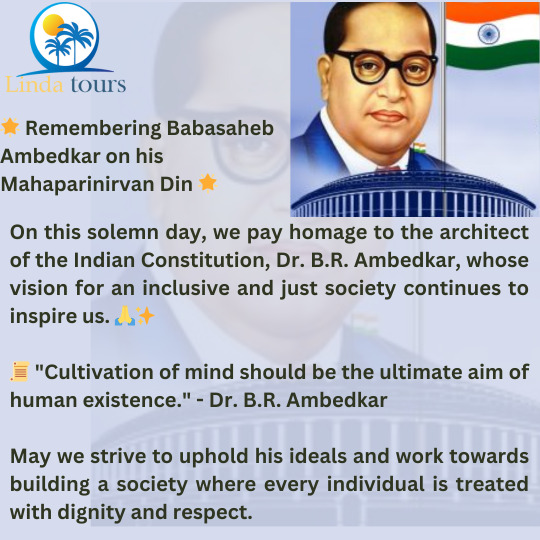
🌟 Remembering Babasaheb Ambedkar on his Mahaparinirvan Din 🌟
On this solemn day, we pay homage to the architect of the Indian Constitution, Dr. B.R. Ambedkar, whose vision for an inclusive and just society continues to inspire us. 🙏✨
📜 "Cultivation of mind should be the ultimate aim of human existence." - Dr. B.R. Ambedkar
May we strive to uphold his ideals and work towards building a society where every individual is treated with dignity and respect. 🌐🤝 #AmbedkarMahaparinirvanDin #SocialJustice #EqualityForAll #BabasahebAmbedkar
📞+91 98197 00563👈
🔮www.lindatours.in
🌊[email protected]
#ElephantaIsland #TravelGoals #AdventureAwaits #ElephantaSolo #SoloAdventures #ExploreOnYourOwn #ElephantaGroup #GroupAdventure #traveltogether
1 note
·
View note
Text
Worker at Railway Station

View On WordPress
#Babasaheb Ambedkar#Banner#blue#Color#hand#holding#Maharashtra#Mobile Photography#Night#Pune#Railway station#Street Photography#Woman#Worker
0 notes
Text
Social Justice Warrior: Thanthai Periyar’s Struggle for All-India OBC, SC, and ST Reservation in Education | History behind Social Justice Day — Rational Sapien.
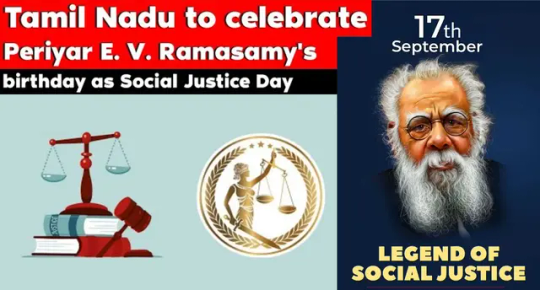
Thanthai Periyar, also known as E. V. Ramasamy, was born to a wealthy merchant in Erode and lived in opulence. In his early days, he was attached to the Indian National Congress and the Khadi movement. He carried Khadi clothes on the streets and sold them, and moved his family to a simpler life.
As a nationalistic Congress leader, Periyar carried bundles of Khadi clothes on his shoulders with the hope of bringing social justice alive. He focused on passing a bill on “Communal Representation” to ensure fair representation for non-Brahmins in government and other institutions. He carried copies of the bill in his hands for five consecutive Congress conferences.
However, due to the heavy Brahmin dominance in the party, his bill was not passed. Instead, the Brahmins twisted his “Community based Representation Bill” as a form of “Divisive communalism”. Periyar realized that the Congress movement was the “fort of Brahminical supremacists.”
Periyar was a powerful and wealthy man, but he gave up everything to fight for social justice. He resigned from his 26 positions, including that of Erode City Council president, to join the Congress party. Later, when he realized that the Congress was not committed to social justice, he left the party in 1925. He said, “If the nation was liberated without social justice, it would only benefit the dominant caste (Brahmins).”

Rettaimalai Srinivasan (left), Justice Party leaders - P. Theyagarayar & Dr. T.M Nair, Periyar ( DK @ Dravidar kazhagam), Arignar Anna ( Dravidar Munnetra Kahzagam @ DMK)
During British rule in the 19th century, Brahmins dominated all fields. The fight for caste-based reservation has a long history, starting with Ayothidasa Pandithar’s call for non-Brahmins to have the right to employment in 1891, and continuing with the Justice Party in 1916.
The Justice Party pioneered social justice in South India by implementing reservation for non-Brahmin communities in 1916. This paved the way for inclusive growth. Brahmins claimed that giving equal representation to all communities was “divisive communalism” to maintain their own power and privilege.
The Justice Party came to power with the support of the people and the Council of Ministers led by King Panagal presented the bill in the Legislative Assembly in August 1921. This draft law was notified as a Government Ordinance Communal G.O 613 (16.9.1921) and a committee consisting of legislators was constituted to monitor the proper implementation of the Ordinance.
After this, on August 15, 1922, an ordinance was promulgated to provide class representation in educational institutions, but this ordinance was stalled due to the conspiracy of the Brahmins. The fact that what happened on that day was the lack of support from the governor and the white ICS officials. Hindu, Sudeshamitra etc. Brahmins wrote strongly against it.
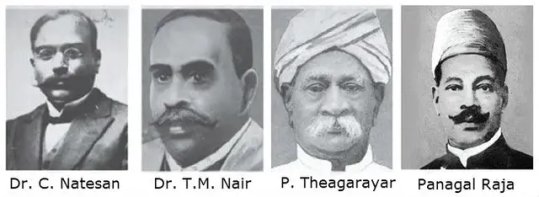
Justice Party Leaders
The Justice Party lost the third election in 1926. There was a dispute among the majority Swarajya Party over who would be the Chief Minister. Therefore, the Swarajya Party brought P. Subbarayan from the Justice Party and asked him to form an independent cabinet so that the Justice Party should not form the cabinet. Similarly, he formed a cabinet with himself as the Chief Minister and Swarajya Party member A. Ranganatha Mudaliar and RN Arokiasamy Mudaliar as ministers and took over the government on 4.12.1926. The Swarajya Party dreamed of winning Subbarayan away from the Justice Party and bringing it to their side. However, he also led the government after listening to the Justice Panagal, who was the leader of the opposition party. Therefore, his regime is considered as a Justice Party regime.
Suppurayan, a former Justice Party member, was supported by both the Swarajya Party and the Congress Party, but Suppurayan took office as Chief Minister in August 1927 when he moved a motion of no confidence in the Subpurayan cabinet, which was defeated with the support of 14 members of the Justice Party.

Paramasivam Suppurayan, a former Justice Party member successfully implemented Communal G.O with the help of Justice Party in 1928.
S. Muttiah Mudaliar left the Congress party opposing the Congress’s pro-brahmin activites and join the Suppurayan cabinet. He was the first to introduce the new Caste Reservation Act in the Madras Provincial Assembly on 04.11.1927. The Suppurayan Cabinet issued a new order for caste reservation in 1927 (G.O. M.S. No 1021).
On January 28, 1928, Subparayan did not accept the resolution passed by the Swarajya Party in the Legislative Assembly to ignore the Simon Commission. So two ministers belonging to the Swarajya Party resigned and therefore got the support of the Justice Party Suppurayan became Ministers in his cabinet S. Muthiah Mudaliar and MR Sethuratnam Iyer. Justice Party and Self-Respect Movement as their commander Soundarapandian came to the Suppurayan cabinet as the whip of the ruling party. Soundarapandian built this cabinet like a fortress.
This cabinet came into charge on 16 March 1928. This cabinet is also considered as the Justice Party cabinet.
This Cabinet passed Communal Ordinance №744, dated 13.9.1928. This order issued by S. Muthiah Mudaliar for the first time defined this number of places for all the communities. Yes, S. Muthiah Mudaliar, a non-Brahmin, issued this “Community based Reservation for all Government jobs” in 1928 providing 100% reservation for the entire population, including Brahmins, non-Brahmins, and minorities.

Community Based Reservation implemented by Suppurayan Devised by Justice Party in 1926.
After the implementation, Periyar pointed out some of the issues in the Communal Go G.O. M.S. No 1021.
Minister S. Muthiah Mudaliar brought this Communal Ordinance for the Registration Department he was holding. But, Periyar wrote in the “Kudiarasu” that communal representation should be implemented in all sectors. Accepting Periyar’s order, the Subbarayan cabinet issued this order in other departments as well. By these orders, non-Brahmins got reservation in government jobs. Thus Periyar enriched communal representation. Periyar praised this as “long live Muthiya Mudaliyar!” in Kudiarasu Editorial Magazine.
Periyar’s campaign progressed by demolishing the Brahminical structure by exposing the Brahmins’ conspiracy in his editorials and articles in the Kudi Arasu newspaper. Thanthai Periyar used his power and authority in the Madras province to educate all non-Brahmin communities about the true purpose of community-based reservation.
People who say that Periyar wasn’t important for social justice don’t understand how he changed people’s minds.
Periyar started the Self-Respect Movement in 1925, the same year as the Indian National Congress. He worked hard to expose the harmful structures of these systems to the people.He played a big role in social justice because of the ways he showed people how caste, religion, piety, superstitions, misogyny, ritualism, and formalism were harmful and kept people from respecting themselves.
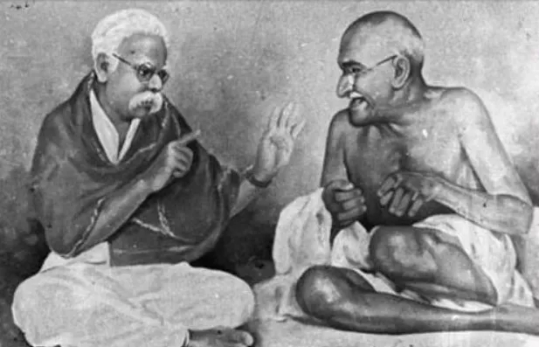
Periyar Left congress & Started Self Respect movement in 1925.
Periyar didn’t just go to public meetings but also to caste groups meetings. He spoke at caste conferences. Talking to caste groups is like handling a double edged knife But Periyar handled it tactfully. Periyar made miracles by changing the caste mindset into an egalitarian mindset and asking for the rights due to their caste.
Beginning in 1925, he addressed more than ten caste conferences covering the majority of the population. In particular, the conferences of castes like Nadar, Sengundar, Vanniya Kula Chatriyas, Chettiars, Pallars and Adi Dravidians are included in it.”
A caste conference should be convened to take the shortcomings of each caste to the government. If you call me to caste conferences, I will talk about everything and Caste annihilation. He was the one who said that the cruelty of one being superior and one being inferior taught by the Varnashrama Dharma should be eradicated.
He also expressed the shame of having caste Pride. At the same time, he also spoke for rights that were denied in the name of caste. He brought egalitarianism and social justice rights so subtly in the People’s Forum.
After India’s independence, Periyar held caste abolition conferences in a political environment where people developed caste pride out of greed for position and power. Periyar always talked about social justice rights at all conferences, no matter whether they were caste Group conferences or caste abolition conferences.
The Justice Party was able to bring about social change by implementing community-based reservation under British rule through dual rule system. Even after Justice Party, this system of reservation continued till 1950.
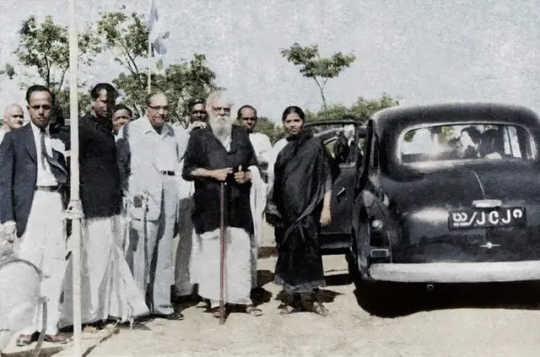
Babasaheb Ambedkar & Thanthai Periyar E V Ramasamy
The Constitution enacted on January 26, 1950, by the intellectual revolutionary Ambedkar, provided for reservation in employment only, but there was no reservation in education. After Independence, Brahminism made its first major attack on social justice brought by Justice party.
It was then that the greed of the brahmins made them gobble up the reservation reserved for the brahmins themselves. Sembagam Durairajan and Srinivasan case played a major role in that. They said “Both of them didn’t get seats in medical college and engineering college respectively”. They filed a case in the Madras court claiming that this was against the fundamental provisions of the Constitution.
After hearing the case of these two, the court found that “Sembagam Durairajan did not apply to the medical college and Srinivasan falsely reported that he did not get a seat even after 14.29% of the reserved engineering seats for Brahmins were filled.” Through their Greediness, the wish of the Brahmins was fulfilled. On 27.07.1950, The Madras High Court struck down the Madras Province’s “Community-based Reservation Rights Act in Education and Employment” Act, which was in implementation from 1924 to 1950, as unconstitutional. The Supreme Court also gave the same verdict.
How will Periyar, as a man who threw away his prosperous life and positions in Congress fighting for the right of social justice for all oppressed castes, accept this verdict?.
14th August in 1950, Periyar launched agitation and gave the clarion call to the people of Tamil Nadu to express protest by declaring “Communal Reservation Day”. The protest was against the judgment given by Supreme Court of India that stayed the Communal Reservation Policy implemented in Madras Presidency right from 1928. On 07.08.1950 at Robinson Park, Chennai, 50,000 people attended the meeting and Periyar invited people from all walks of life to fight.
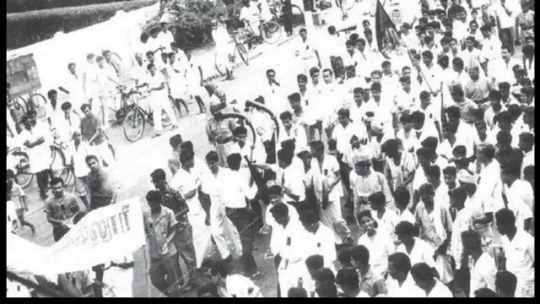
Chennai Pachaiyappa’s College Students joined the protest with Periyar.
On 14th August (1950), Accepting Periyar’s invitation, various students staged a protest. Students of Chennai Pachaiyappa’s College protested against the court order. Periyar’s Call ignited Total agitation in Tamil Nadu in all sectors and all sections of people including students, teachers, doctors, govt. servants, all non-brahmins joined the struggle.
The slogans of “Abolish the political law, want communal rights” chanted by the entire gathering echoed up to the Delhi Union government.
On December 3, 1950, in Trichy, Periyar gathered all-party communal rights supporters including Perarignar Anna (DMK), Kamarajar, and convened a communal conference at Periyar House. He conducted a conference and said, “You have given four water pipes with taps to the streets; but you have not given the water supply to that tank! We have been given reservation for employment, but we have not studied yet. Then, how can we go for job opportunities?”. Periyar passed the Communal G.O.
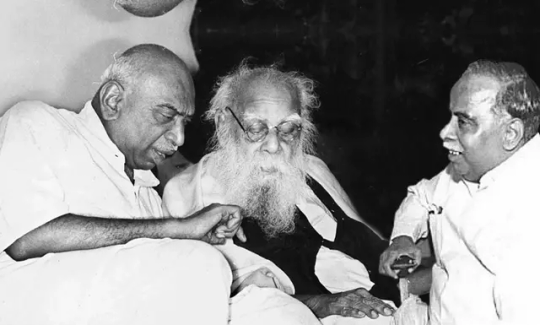
Kamarajar (Left), Thanthai Periyar (center), Perarignar Anna (right).
Tamil Nadu registered its protest that students are protesting and shutting down shops everywhere in Tamil Nadu. They protested by showing black flag to Union Ministers. On the other hand, Kamaraj and Sardar Vallabhbhai Patel conveyed the Seriousness & strength of Periyar’s Protest to the the Prime Minister of the India, Jawaharlal Nehru. Ambedkar also registered his opposition.
Periyar’s voice spread not only to the ears of the Delhi Union government but also to the people about the necessity of reservation in education. Periyar’s agitation forced the Nehru government to come down on education reservation.
The first amendment was tabled in Parliament by Chief Minister Pandit Jawaharlal Nehru on 10.05.1951. Including Education reservation, a total of 14 amendments were made in the Constitution through a single proposal. Nehru mentioned this in his introductory speech on the amendment. “Protests in Madras province lead us to amend the law”. Parliament passed it on 18.05.1951 with an overwhelming majority and made it law.
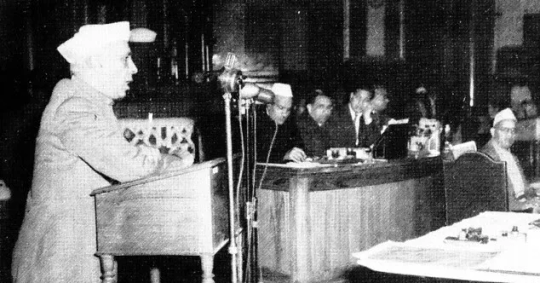
First Constitutional amendment by Chief minister of India, Pandit Jawaharlal Nehru.
In order to overcome the verdict in the Champakam Durai Rajan case, the Parliament brought in the First Amendment Act, 1951 and inserted clause 4 to Article 15. The provisions of this clause are in the nature of an enabling provision (allows, felicitate) and do not impose any obligation on the State to take any special action under it. It merely confers discretion to act if necessary by way of making special provisions for socially and educationally backward class and Scheduled Castes and Scheduled Tribes.
Article 15(4) : “neither clause of this Article 15 nor Clause 2 of Article 29 shall prohibit the State from making any special provision for the advancement of any citizen of socially and educationally backward classes or of Scheduled Castes and Tribes”
Until then, Article 16(4) ensured reservation only in case of employment. Reservation in education came only after the First Amendment, which ensured reservation for backward, scheduled, and minority communities across the country by the Union and State Governments. Through the efforts of Periyar and the DMK, the addition of Section 15(4) to the Indian Constitution paved the way for the Mandal Commission protests by periyarists and the implementation of all-India OBC reservation in education by V.P. Singh.
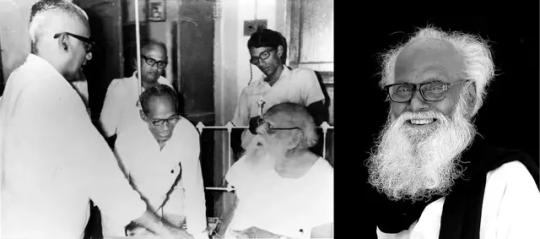
V Anaimuthu (centre) receives permission from Periyar to publish his thoughts.
When Periyar passed away in 1973, Anaimuthu, A periyarist, continued the struggle for social justice of backward classes. Anaimuthu parted ways with the D.K and formed the Periyar Sama Urimai Kazhagam (Periyar Equal Rights Kazhagam) which took up reservation as their main agenda. Between 1976 and 1982, Anaimuthu conducted his campaign for reservation in education and employment in the Central government. In Bihar, their volunteers filled the prison as part of this demand. He took the struggle to New Delhi. The Mandal Commission was formed because of these pressures.
Anaimuthu made sure the Mandal Report was released in Parliament in 1980, thanks to which 50 per cent reservation for the Backward Classes was passed. But it was not implemented as promised, hence he began to meet Members of Parliament from 1981 onwards. In 1990, the then Prime Minister V P Singh announced in the Parliament that the recommendations of the Mandal Commission would be implemented Which provides 27% reservation for OBC’s on top of 23% reservation for SC and ST in India.
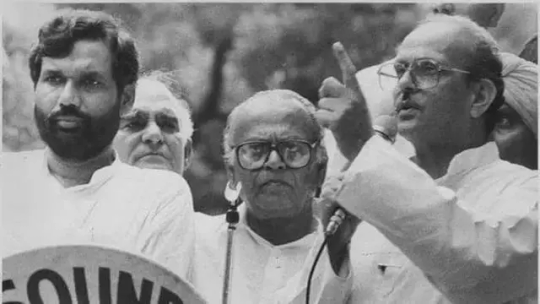
Former Prime Minister V.P. Singh addressing a rally about implementation of the Mandal Commission Report in August 1990
Indira Sawney challenged the Mandal Commission and government decision to implement the OBC Reservation by V.P.Singh in the Supreme Court. In 1992, All India OBC reservation was implemented after Indira Sawney case was Closed with a provision that maximum reservation can be 50% of the educational seats or job vacancies and creamy layer of income of ₹8 lakhs per year. Anaimuthu’s untiring effort to implement the Mandal Commission report in this decade is a milestone in Indian history.
There are so many leaders who have made the government realize the right of social justice. But Periyar was the foremost among the leaders who spread the importance of Social Justice through reservation to the people and even today his followers ensure the
Periyar was a tireless advocate for the rights of the oppressed and backward people in the People’s Forum, touring all the nooks and corners of Tamil Nadu to the extent that he gave up his elite life. People say, “There was no place in Tamil Nadu where Periyar did not set his feet.” Periyar was an uncompromising opponent of the Brahminical intrigue against social justice reservation in the political arena. Social justice is the tool that Periyar used in his political arms to pave those paths against Brahminical intrigue and restore the social rights of the Tamil Nadu. Calling the social justice hero Thanthai Periyar’s birthday as Social Justice Day is a small thank-you to him for his lifelong struggles for the majority oppressed castes.
“One comes to school for training to acquire merit and skill. But if you need a qualification and skill even to study and get training, this is foolishness,” said Periyar. The ruling union government is keeping the meritorious children of our children by imposing merit tests like NEET to protect the power structures of Brahminism. Let us stand on the path of Periyar, who stood for social justice, and take a pledge to eliminate the anti-social justice selection criteria on this Social Justice Day.
#Periyar#Dravidian#Education Reservation#All India OBC SC ST Reservation#E V Ramasamy#First Constitutional Amendment#Indian Educational Reservation#Dalit Rights#Babasaheb Ambedkar
1 note
·
View note
Text
चिमुकल्याचे भाषण तुफान व्हायरल : अंगावर शहारे आणणारे डॉ.बाबासाहेब आंबेडकर यांच्यावरील भाषण चिमुकल्याच्या शब्दात
जळगाव : सध्या सोशल मीडियावर अंगावर शहारे आणणारे एका लहान चिमुकल्याचे भाषण तुफान व्हायरल होत आहे. या चिमुकल्याने डॉक्टर बाबासाहेब आंबेडकर (Babasaheb Ambedkar) यांच्या विषयी केलेलं तीन मिनिटांचे भाषण नेटकऱ्यांना भुरळ घालत आहे. तो म्हणतो, अन्यायाची जाणीव करून दिल्याशिवायतो बंड करून उठणार नाही. म्हणून शिका, संघटित व्हा संघर्ष करा. हा तुमच्या आमच्या जीवनाचा मंत्र डॉ. बाबासाहेब आंबेडकर यांनी…

View On WordPress
0 notes
Text


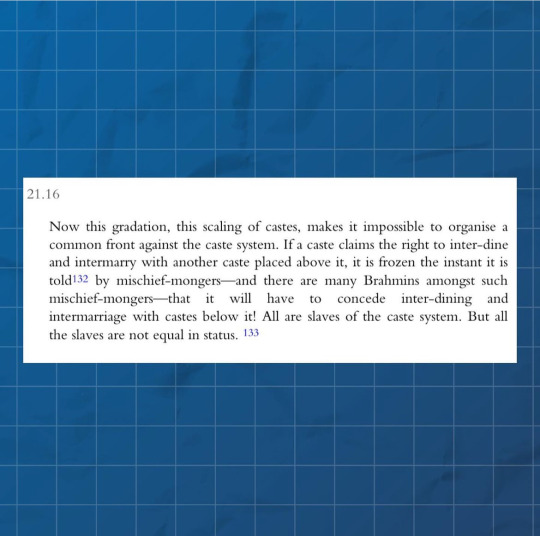

Annihilation of Caste : Speech Prepared by Dr. Babasaheb Ambedkar for the Annual Conference of the Jat-Pat-Todak Mandal of Lahore. (not delivered)
Some excerpts I love reading again and again. A must to start your journey of being anti-caste. And the next goal is to get your family to read.
One thing I learnt from Dr B. r. Ambedkar is rejecting so called ideals that did no good to the world. And will use that ability till the day I can. 😇
2 notes
·
View notes
Text
Grammar of Anarchy in Modern India
“...it is quite possible in a country like India – where democracy from its long disuse must be regarded as something quite new – there is danger of democracy giving place to dictatorship. It is quite possible for this newborn democracy to retain its form but give place to dictatorship in fact.” These lines are excerpted from Dr Ambedkar’s famous speech “The Grammar of Anarchy”, delivered on November 25th 1949, the eve of the adoption of the Indian Constitution. In this address, Babasaheb defined the difference between a real democracy and a facile one and laid down certain principles that he expected the future generations to adhere to, if they wished for the Indian constitutional democracy to coincide in form and in fact.
It was indeed amid much pomp and publicity that in 2015, the 125th birth anniversary of Dr Ambedkar, the current government decided to attest the tag of National Constitution Day to November 26th. It was just one of the many ways in which governments, over the years, have tried to appropriate the idea of Ambedkar for their vested interests without giving any thought to his ideals. Seen in this context, it becomes important to analyse whether today’s democratic India has lived up to the expectations of the architect of its constitution.
The first principle that Ambedkar mentioned in his speech was that in a real democracy, progress should be brought about only through constitutional methods. He sought an end to methods of Non-Cooperation and Civil Disobedience which, unless restricted, could paralyze development and saw protests as a symbol of facile democracies. Today’s India is far from realising that goal. We are a country that protests at the drop of a hat. However, more often than not, these protests, far from stifling development, have been used to coerce those in power to take the right step. Be it the 2011 anti-corruption dharnas pushing for passage of appropriate legislations or the CAA-NRC protests or the more recent anti-farm law sit-ins appealing for retraction of unpopular legislations, agitations against the ruling dispensations have been the guiding light of our democracy, seeking adherence to the constitution. So does this mean Ambedkar was wrong in his assessment of protests? No. In his speech, Babasaheb, while advocating for an end to unconstitutional protests, specifically spelled out that when there is no possibility of achieving change through constitutional means, resorting to unconstitutional methods was the only way forward. When constitutionally elected governments show apathy towards the needs or worse, go against the wishes of the very people who put them in power and constitutionally established courts and politically established opposition also leave people in the lurch, the only recourse left for the people is to mobilise and swerve those in power in the right direction. Thus, the very fact that today mass mobilisations and protests are needed to exhort governments to do what they’re elected to do, points towards the disuse and misuse of constitutional machinery.
His second prescription of eschewing the deification of leaders, is perhaps also the most pertinent advice in contemporary times. Today we have downgraded ourselves into a nation of hero-worshipping fanatics, divinizing our political leaders to the point where we fail to accept that they can ever err and ignore them when they actually do so. Living in times when being anti-Modi is routinely equated to being anti-India, Babasaheb’s warning that in politics Bhakti is a sure road to eventual dictatorship rings truer than ever.
Finally, Ambedkar in his speech, recommends us to evolve into a social democracy i.e., we mustn’t be content with the mere political sanction of liberty, equality and fraternity, but should strive to make these ideals, a way of life. Acknowledging the chasm between ‘constitutional guarantees’ and ‘social realities’, Babasaheb had famously remarked that India would, on January 26th 1950, enter into a life of contradictions where political equality would stand in contrast with socioeconomic inequalities. In calling for a social democracy, it was this gap that he sought to bridge. However, it is the sad reality of our times that, even in this aspect we have failed him. 70 more 26th Januarys have passed since that observation was made and still, we find ourselves stuck in the same quagmire. Obdurate lines of caste, class and religious inequalities have been redrawn by politically motivated leaders who find benefit in refusing to let these lines fade; Sectarian affiliations continue to override national unity, crumpling up the ideal of fraternity. And liberty, attacked by both state and non-state actors, has become a mere chimaera.
Thus, our country’s current socio-political standing is far from what the creator of our constitution had hoped it would be. It’s indeed impossible for a country as vast and diverse as ours to embody an ideal democracy, but that shouldn’t mean that we retrograde into becoming a facile democracy. Superficially celebrating the Constitution Day or Mahaparinirvan Diwas will only amount to lip service unless we reinstate adherence to these principles which add life into the soul of India’s democracy, principles prescribed by the father of the constitution himself and principles which will otherwise end up being mere quixotic embellishments for a bleak reality.
#indiralakshmi#what'sonmymind#keepingitreal#india#writers of tumblr#desi blog#law school#writers of india#constitution#indian constitution#ambedkar#jai bhim#law day#babasaheb#preamble#grammar of anarchy#speeches#famous quotes#history#independence#indian history#blogblog#indian politics#politics#indian national congress#government#prime minister#leader#life#country
11 notes
·
View notes
Text
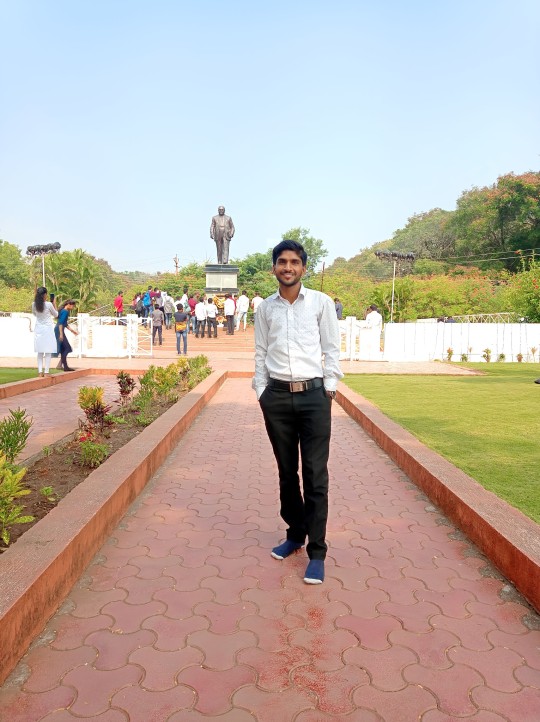
ज्ञानाच्या अथांग महासागरास विनम्र अभिवादन...💐💐💐
4 notes
·
View notes
Text
Monday Motivation: Dr. B R Ambedkar – A true Youth motivator

Rarely does the world see a man who not only talks about changes and reforms but also practices them in the earnest? Dr. B R Ambedkar was one such man who stood true to his convictions. He served as chairman of the drafting committee of the Constitution of India, and Minister of Law and Justice in the first cabinet of Jawaharlal Nehru from 1947 to 1951.
The reason that draws me to his teachings is that Symbiosis’ motto Vasudhaiva Kutumbakam- The World is One Family is aligned with Dr. Ambedkar’s beliefs on inclusivity. He was a man of great intellect Dr. Ambedkar was an Indian jurist, economist, and social reformer who fought economic and social discrimination against the untouchables. Much against the caste system he even renounced Hinduism and inspired the Dalit Buddhist movement.
However, among all his feats I would like to draw upon the fact that he was a prolific student. He earned doctorates in economics from both Columbia University and the London School of Economics and even gained a reputation as a scholar for his research in law, economics, and political science. In his early career, he was an economist, professor, and lawyer. He inspired not hundreds but thousands of students or rather the youth at large to be thinkers and doers. He is known as the man who had the greatest contribution in framing the constitution of the country; the constitution that enables us to live in a democratic republic. Having framed the constitution he made us aware of the responsibility that we bear towards our nation and he inspired the youth of the nation to be the change bearers of the society.
The two aspects that create emancipation in the society education and youth were closest to his heart. Dr. Ambedkar has been a teacher in the truest sense. As an educational institution we too at Symbiosis, endeavor to imbue the youth with morals and ideals that will fare them through the journey of life but with a strong sense of duty towards their country.
To carry his thoughts forward Symbiosis has established Dr. Babasaheb Ambedkar Memorial and museum which houses Dr. Ambedkar’s personal belongings, the bed on which he breathed his last, his letters to
Important people whom he met, his writings on various subjects, and several other things that depict his personality are housed here. His followers and scholars from all across India and even foreign countries visit this great monument. Students from across the globe also get inspired by Dr. Ambedkar’s life and thoughts. What I am most happy about is that my mother Mrs. Mujumdar has devoted her life to taking care of this museum. She has also written several books on Dr. Ambedkar which continue to inspire the youth.
Dr. Babasaheb Ambedkar's inspirational message to his followers was "Be Educated, Be Organized, and Be Agitated," and he is a true Youth motivator. Source:- Dr. Vidya's Blog Pro-Chancellor of Symbiosis International
4 notes
·
View notes
Text
Babasaheb Ambedkar Quotes l Jaibheem l பாபாசாகேப் அம்பேத்கர் | Lemuria Quotes
Babasaheb Ambedkar Quotes l Jaibheem l பாபாசாகேப் அம்பேத்கர் | Lemuria Quotes
Babasaheb Ambedkar Quotes l Jaibheem l பாபாசாகேப் அம்பேத்கர் | Lemuria Quotes
வணக்கம்,என் அன்பான உலகமெங்கும் வாழும் தமிழ் ச���ந்தங்களே மற்றும் நண்பர்களே மீண்டும் ஒரு புதிய பதிவின் மூலம் உங்களை சந்திப்பதில் மிக்க மகிழ்ச்சி.
நம் லெமூரியா கோட்ஸ் (Lemuria Quotes) இணையதளத்தில் தொடர்ந்து எங்களோடு பயணியுங்கள் உங்கள் ஆதரவினை எப்பொழுதும் எங்களுக்கு தாருங்கள்.
உங்களின் கருத்துக்களை பதிவு செய்யுங்கள்.…

View On WordPress
#Annal ambedkar quotes#Babasaheb Ambedkar Quotes in tamil#Dr Ambedkar Quotes#Dr Ambedkar sayings#Jaibheem#Lemuria Quotes#Tamil quotes
2 notes
·
View notes
Text
#Ambedkar#Babasaheb#AmbedkarJayantiSpeech#BRAmbedkar#AmbedkarJayanti#Bhashan#BhashanInHindi#BhimraoAmbedkarJayanti#BhimraoAmbedkarJayanti2024#Wishes#quotes#SMS#facebook#WhatsappStatus#HindiNews
0 notes
Text

DR. B. R. AMBEDKAR JAYANTI
To Honor Dr. Ambedkar's Legacy, we must promote Love, Compassion, and Equality in all of our Actions
www.ferty9fertilitycenter.com
#Ferty9#FertilityCenter#DrJyothi#AmbedkarJayanti#14thApril#Ambedkar#BabaSahebAmbedkar#DrAmbedkar#TheFatherofIndianConstitution#DrAmbedkarJayanti#BabaSaheb#BhimRaoAmbedkar
0 notes
Text

DR. B. R. AMBEDKAR JAYANTI
Commemorating Ambedkar's Jayanti with Gratitude and Reflection!
www.drvimalaskinhair.com
#Drvimala#Dermatology#Cosmetology#AmbedkarJayanti#14thApril#Ambedkar#BabaSahebAmbedkar#DrAmbedkar#TheFatherofIndianConstitution#DrAmbedkarJayanti#BabaSaheb#BhimRaoAmbedkar
0 notes
Video
youtube
Father of India Dr. Babasaheb Ambedkar Jayanti | डॉ.भीमराव अम्बेडकर से स...
#youtube#Ambedkar Jayanti 2024#Father of India Dr. Babasaheb Ambedkar Jayanti#डॉ.भीमराव अम्बेडकर से सम्बंधित कुछ रोचक तथ्य#डॉ भीमराव अंबेडकर#ambedkar#academic#drbhimraoambedkar#biography
0 notes
Link
https://marmikmaharashtra.com/mahaparinirvana-day-the-great-man-dr-offering-notebooks-and-pens-to-the-image-of-babasaheb-ambedkar-without-garlands/
0 notes
